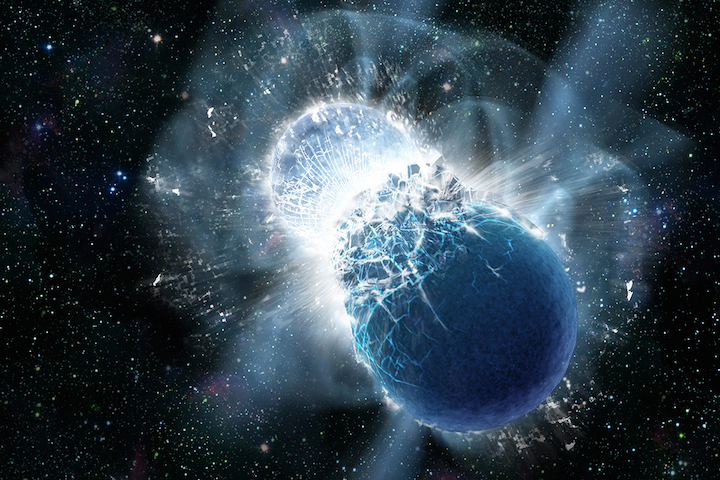24.08.2017

Have we detected a new flavour of gravitational wave? Speculation is swelling that researchers have spotted the subtle warping of the fabric of space resulting from the cataclysmic collision of two neutron stars.
Now optical telescopes – including the Hubble Space Telescope – are scrambling to point at the source of the possible wave: an elliptical galaxy hundreds of millions of light years away.
Gravitational waves are markers of the most violent events in our universe, generated when dense objects such as black holes or neutron stars crash together with tremendous energy. Two experiments – LIGO in the US and VIRGO in Europe – set out to detect minuscule changes in the path of laser beams caused by passing gravitational waves.
LIGO has discovered three gravitational wave sources to date, all of them colliding black holes. The two observatories have been coordinating data collection since November, increasing their sensitivity. That collaboration may be about to pay off.
Neutron stars
Over the weekend, astronomer J. Craig Wheeler of the University of Texas at Austin launched speculation over a potential new LIGO detection by tweeting: “New LIGO. Source with optical counterpart. Blow your sox off!”
By optical counterpart, he probably means that astronomers could observe light emitted by the gravitational wave source. This suggests the source is neutron stars as, unlike black holes, they can be seen in visible wavelengths. LIGO researchers have long-anticipated this possibility, setting up partnerships with optical observatories to rapidly follow-up on potential signals prior to formally announcing a discovery.
LIGO spokesperson David Shoemaker dodged confirming or denying the rumours, saying only “A very exciting O2 Observing run is drawing to a close August 25. We look forward to posting a top-level update at that time.”
Speculation is focused on NGC 4993, a galaxy about 130 million light years away in the Hydra constellation. Within it, a pair of neutron stars are entwined in a deadly dance. While astronomers are staying silent on whether they are engaged in optical follow-ups to a potential gravitational wave detection, last night the Hubble Space Telescope turned its focus to a binary neutron star merger within the galaxy. A publicly available image of this merger was later deleted.
If LIGO and VIRGO really have picked up the gravitational waves of colliding neutron stars, it might explain why collaborator Andy Howell mused earlier in the week, “Tonight is one of those nights where watching the astronomical observations roll in is better than any story any human has ever told.”
Quelle: NewScientist
